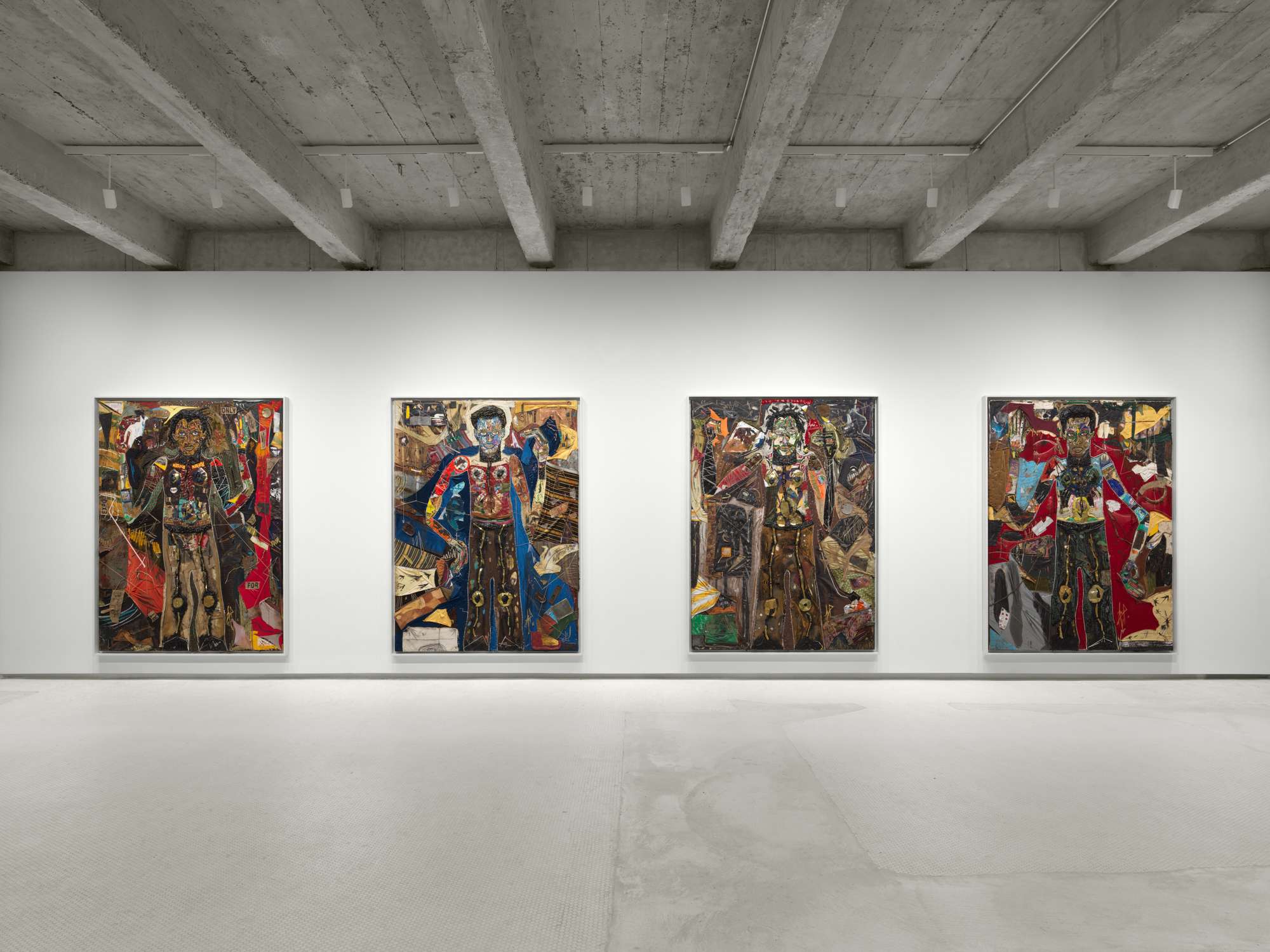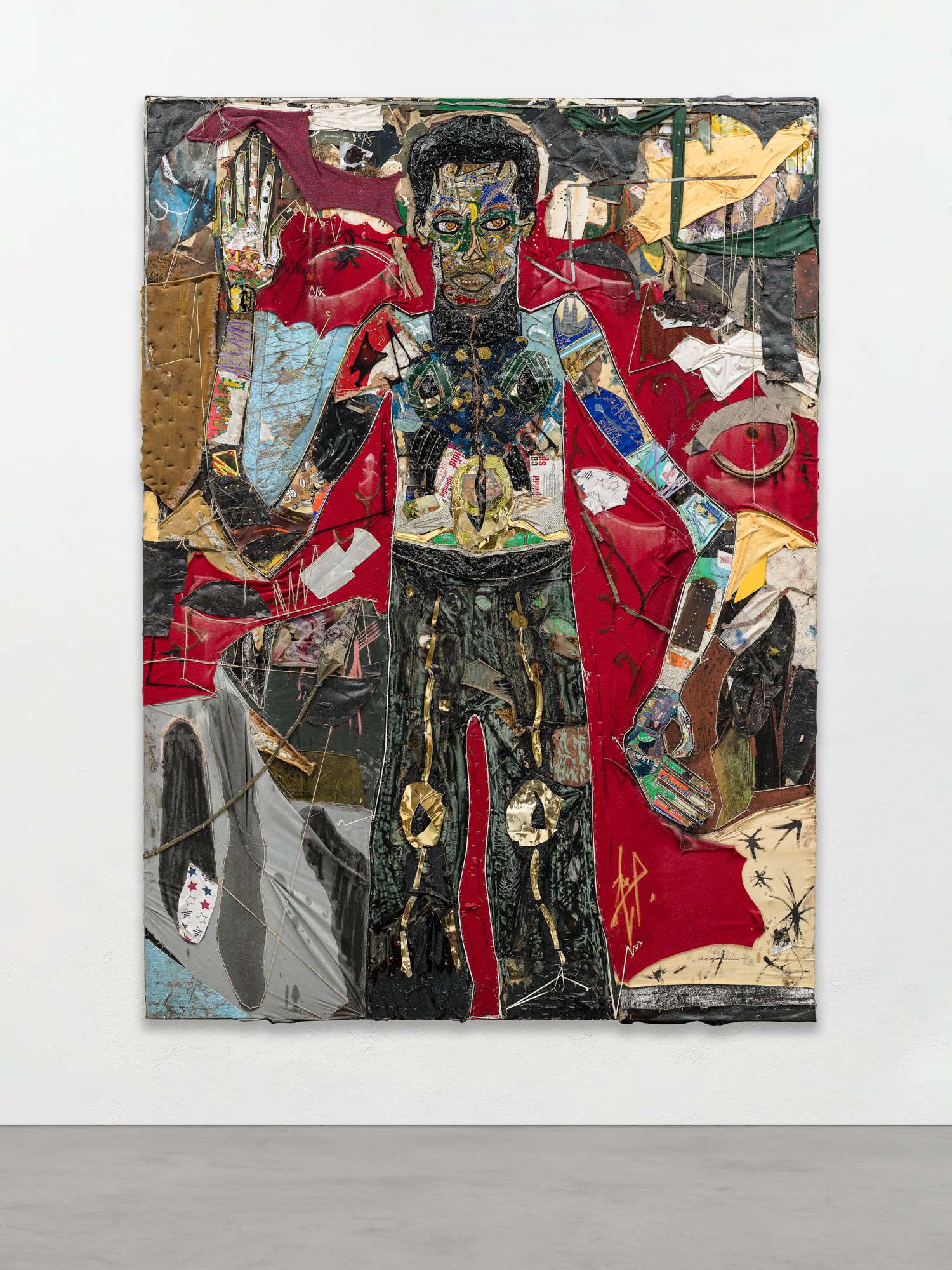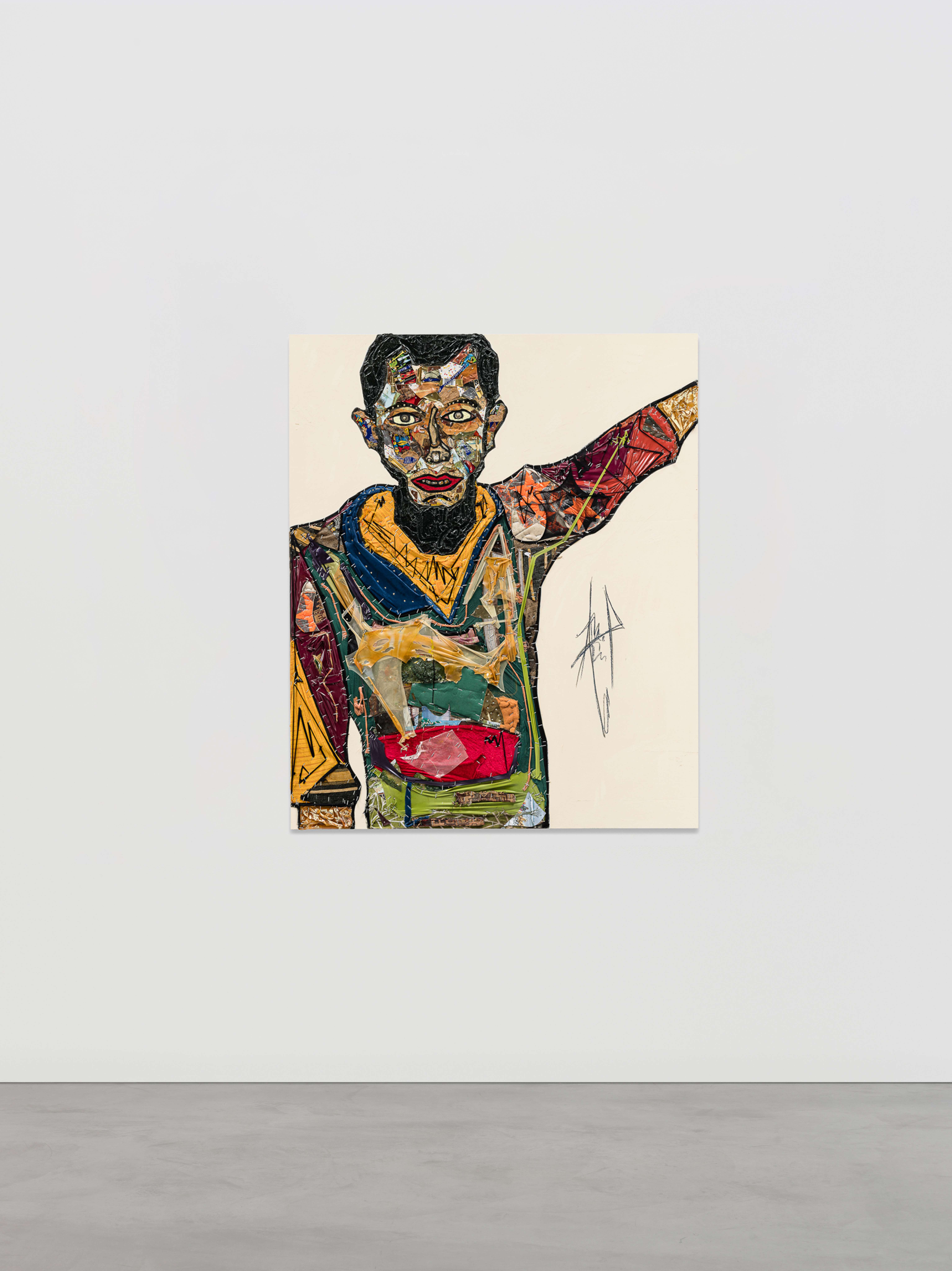
Alexandre Diop
Installation Views
Artwork
Four large untitled “panels” by Alexandre Diop (b. 1995, Paris, France) are composed with the sacred reverence of Byzantine-era icons using a similarly shallow depth of plane. These claustrophobic frontal portraits venerate the artist’s chosen pan-African idols—Fêla Kuti, Guion Bluford, Miles Davis, Nelson Mandela—in a method by which the ground is first built up, or indeed collaged, from scavenged articles of scrap 3 E 89th St New York S94 metal (tin, aluminum); discarded cotton, wool or polyester-blend fabric; plastic film; recycled cards; newspaper and magazine advertisements; and candy wrappers daubed here and there with resin, wax, and oil color to selectively sculpt a cheek, elbow, index finger, or other identifying feature. These figures are finally cast into relief by the threaded outline stretched taught over his mottled and chromatically saturated planes. Diop’s deities are androgynously sexed. Pictured with breasts, broken legs, strong bellies, and arms upraised, their sublimated suffering seems to relay a prayer for a future of another kind.
Alexandre Diop (b. 1995, France) is a Franco-Senegalese abstract artist whose process is guided by the physical realities of the materials he employs in his works. Using everyday objects such as books, photographs, metal, and wood, as well as elements like animal hair, fire, and rust, Diop expresses sympathy with the traditions of the Arte Povera movement.
Diop describes his approach as occupying a zone between painting, sculpture, and relief. Legibility is one of his main concerns. To be legible, something must make immediate sense, which can be challenging in the context of abstract art. Diop finds legibility not within the metaphysical aspects of his work, or within subjective interpretation of meaning, but rather in the corporal facts embedded within the materials themselves.
He recalls once early in his education making a painting on a wooden door and being frustrated with it, until he pasted a scrap of paper to the surface. The certainty of the paper—what was expressed by its reality without the need for any elaboration from him as an artist— made an impression that forever altered Diop’s understanding of his work.
“I saw art as a way to exist,” Diop says, “because I could not seem to exist without saying what I think. I use what appears legible to me, like objects, because I am interested in creating something that’s alive. I want people to feel something. To be impressed. To be shocked. Uncomfortable. Proud. My work creates another reality—not just on a pictorial level, but you feel the reality.”
For information about the exhibition, please contact Fabienne at fabienne@salon94.com
For press inquiries, please contact Michelle Than at michelle@companyagenda.com






